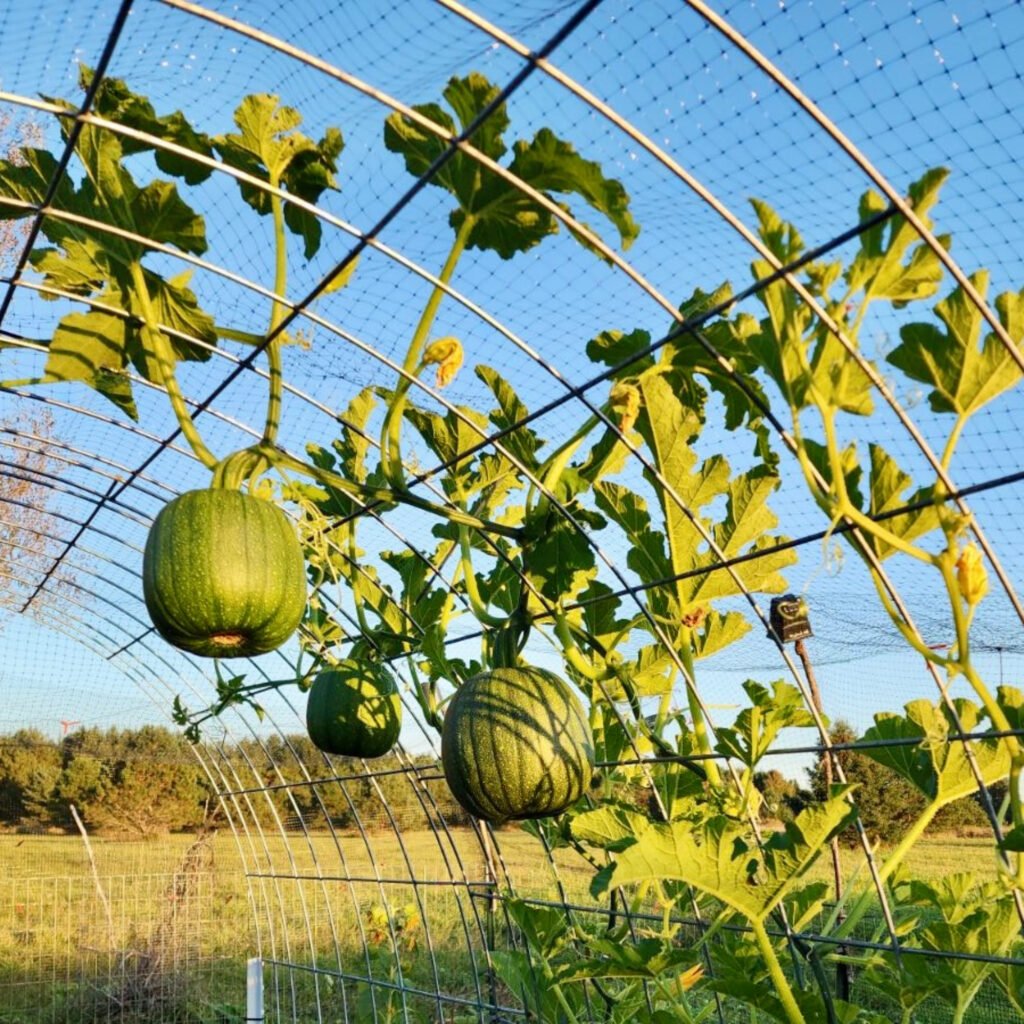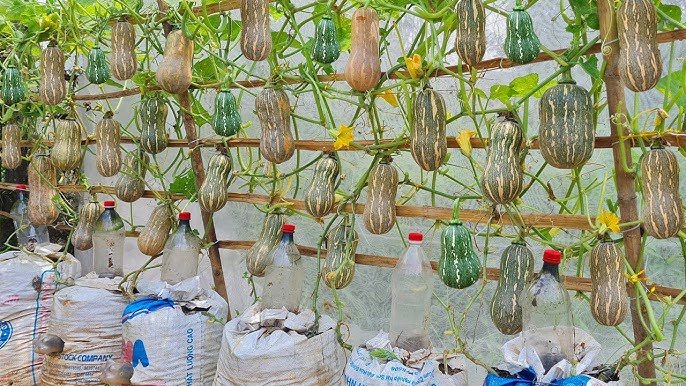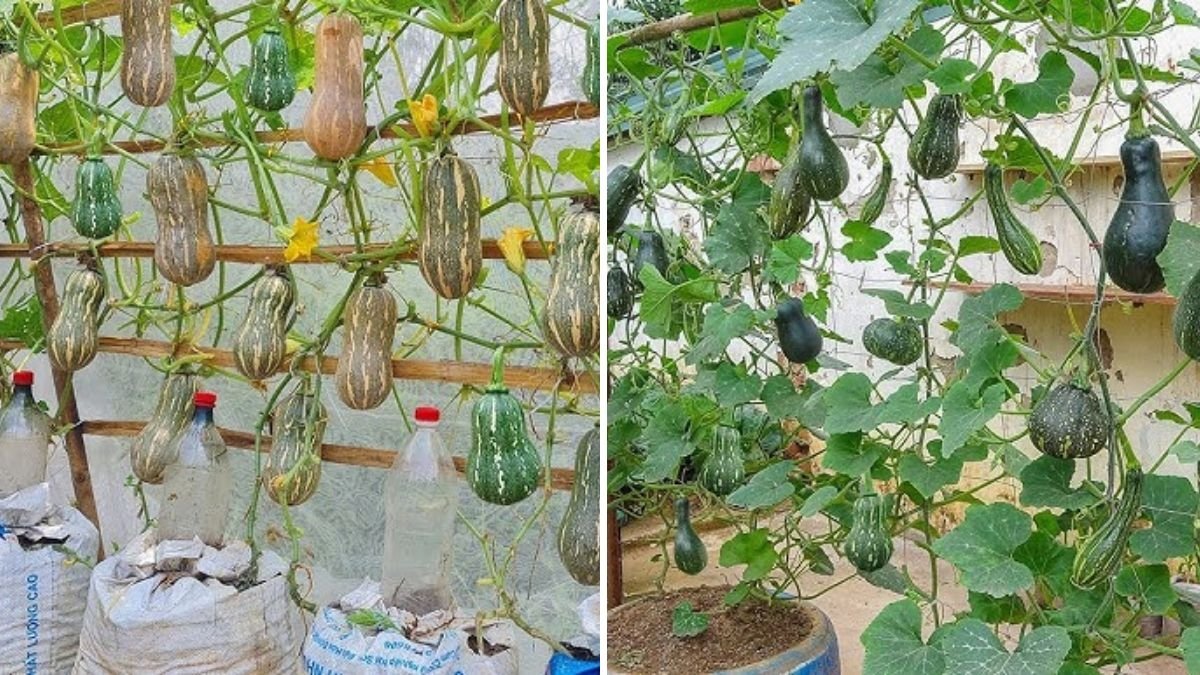Pumpkins are more than just a seasonal decoration—they’re a versatile and nutritious vegetable that can be used in cooking, baking, and even beverages. While pumpkins are often associated with large garden spaces, they can actually thrive in containers when grown correctly. Container gardening allows urban gardeners, balcony owners, and those with limited space to enjoy fresh, home-grown pumpkins. This guide will provide a complete step-by-step method for growing pumpkins in containers at home, from choosing the right container to harvesting your pumpkins.
Why Grow Pumpkins at Home?

Growing pumpkins at home has several advantages:
- Fresh and Nutritious: Home-grown pumpkins are fresher and richer in nutrients than store-bought ones.
- Cost-Effective: Growing your own pumpkins reduces grocery bills, especially during the harvest season.
- Space-Saving: Container gardening allows you to grow pumpkins even in small spaces like balconies or patios.
- Chemical-Free: You have complete control over fertilizers and pesticides, ensuring organic produce.
- Fun and Educational: Growing pumpkins can be a rewarding activity for both adults and children, teaching gardening skills and patience.
Choosing the Right Pumpkin Variety

Not all pumpkin varieties are suitable for container gardening. Smaller, bush-type pumpkins work best for containers, while sprawling vine types are better suited for large garden beds unless you provide vertical support.
Recommended Varieties for Containers:
- Bush or Dwarf Pumpkins: Compact plants that produce small-to-medium-sized pumpkins.
- Jack Be Little: Miniature pumpkins perfect for container growth.
- Sugar Pie Pumpkin: Ideal for cooking and baking; smaller varieties adapt well to containers.
- Baby Boo: Decorative miniature white pumpkins suitable for small spaces.
Choosing the right variety ensures manageable growth, higher yields, and easier maintenance in containers.
Selecting the Right Container
Pumpkins require a large container to accommodate their deep root system:
- Size: At least 18–20 inches deep and 20–24 inches wide for each plant. Larger containers support bigger fruits.
- Material: Plastic, fabric grow bags, or ceramic pots are suitable.
- Drainage: Ensure multiple holes at the bottom to prevent waterlogging and root rot.
- Mobility: Containers with handles or lightweight material make it easy to move them as needed.
Pro Tip: Repurposing large plastic bins or barrels works well for growing pumpkins, making it both sustainable and cost-effective.
Preparing the Soil

Pumpkins thrive in nutrient-rich, well-draining soil. Preparing a proper soil mix is crucial for high yields:
- 2 parts garden soil
- 1 part compost or well-rotted manure
- 1 part perlite or coco peat for aeration and water retention
Mix thoroughly to create a fertile, loose soil medium. Pumpkins prefer slightly acidic to neutral soil with a pH of 6.0–7.0.
Tip: Adding bone meal or rock phosphate at planting encourages strong root development and abundant flowering.
Planting Pumpkin Seeds or Seedlings

Pumpkins can be grown from seeds or seedlings. Here’s how:
- Seeds: Sow 2–3 seeds per container at a depth of 1–2 inches. Once seedlings sprout and develop 2–3 true leaves, thin to the strongest plant.
- Seedlings: Transplant seedlings carefully into containers, burying them up to the first set of leaves to encourage additional root growth.
Spacing: Even in containers, give each plant enough room for root expansion and airflow to reduce the risk of disease.
Pro Tip: Soaking pumpkin seeds overnight before planting can improve germination rates and produce stronger seedlings.
Watering Techniques

Consistent watering is essential for pumpkin growth and fruit development:
- Water deeply 2–3 times per week depending on weather and container size.
- Avoid wetting the leaves to prevent fungal infections; water at the base of the plant.
- Mulch around the base with straw, dried leaves, or coco peat to retain soil moisture and regulate temperature.
Pro Tip: Self-watering containers or using drip irrigation reduces watering frequency while keeping the soil consistently moist.
Fertilization for High Yield
Pumpkins are heavy feeders and need regular nutrients to produce large, healthy fruits:
- Organic Fertilizers: Apply compost, vermicompost, or liquid manure every 2–3 weeks.
- Balanced Fertilizer: Use an NPK fertilizer during vegetative growth for strong leaves and stems.
- Flowering and Fruiting Boost: Apply a high-phosphorus and potassium fertilizer when flowers appear to encourage fruit set.
Proper fertilization ensures vigorous plant growth and a high yield of pumpkins in containers.
Supporting Pumpkin Plants
Even dwarf or bush-type pumpkins may need some support as the fruits grow:
- Trellis: Vertical support can be used for vining varieties to save space.
- Cages: Tomato cages or similar structures can help support sprawling stems.
- Guiding Vines: Regularly guide and tie vines gently to prevent them from breaking or sprawling excessively.
Proper support helps keep fruits off the ground, reduces pest attacks, and improves airflow around the plant.
Pest and Disease Management
Pumpkins in containers are less susceptible to pests than ground-planted ones, but attention is still required:
- Common Pests: Aphids, cucumber beetles, squash bugs, and spider mites.
- Organic Control: Use neem oil, insecticidal soap, or introduce beneficial insects like ladybugs.
- Disease Prevention: Provide adequate spacing, sunlight, and airflow. Remove infected leaves promptly.
Healthy plants produce more flowers and fruits, directly impacting yield.
Pruning and Maintenance
Pruning pumpkin plants improves airflow, directs energy to fruit production, and prevents disease:
- Remove yellowing or diseased leaves.
- Pinch off excess side shoots in bush varieties.
- For vining varieties, trim excessively long vines to control spread and focus energy on fruiting.
Pruning helps container-grown pumpkin plants produce larger, healthier fruits in a limited space.
Pollination Tips
Pumpkins have separate male and female flowers, so pollination is critical for fruit development:
- Hand-pollinate using a small brush or cotton swab to transfer pollen from male to female flowers if pollinators are scarce.
- Ensure at least 2–3 flowers are blooming simultaneously for effective pollination.
Pollination increases the chances of fruit set and maximizes your pumpkin harvest.
Harvesting Pumpkins
Pumpkins are typically ready for harvest 80–120 days after planting, depending on the variety:
- The skin should be firm, hard, and have a deep, even color.
- Use a sharp knife or scissors to cut the fruit from the vine, leaving a small stem attached.
- Avoid harvesting immature pumpkins, as they will not store well and may affect further fruiting.
Pro Tip: Harvest pumpkins before the first frost to avoid frost damage, which can ruin the fruits.
Storing Pumpkins for Year-Round Use
One of the benefits of growing pumpkins is their long shelf life:
- Store in a cool, dry, well-ventilated place.
- Properly cured pumpkins can last 2–3 months or more.
- Avoid stacking pumpkins directly on top of each other to prevent bruising and rotting.
With proper storage, you can enjoy fresh, home-grown pumpkins year-round.
Tips for Maximizing Container Pumpkin Yield
- Choose Compact Varieties: Bush-type pumpkins are ideal for containers.
- Use Large Containers: More root space supports larger fruits and better yields.
- Sunlight: Ensure at least 6–8 hours of direct sunlight daily.
- Regular Monitoring: Check plants frequently for pests, diseases, and nutrient deficiencies.
- Companion Planting: Plant marigolds or basil nearby to repel pests naturally.
- Vertical Growth: Use trellises for vining varieties to save space and improve fruit quality.
Final Thoughts
Growing pumpkins in containers at home is a rewarding, space-saving, and sustainable way to enjoy this versatile vegetable. By selecting the right variety, preparing nutrient-rich soil, providing consistent water and fertilizer, supporting your plants, managing pests, and practicing proper pruning and pollination, you can enjoy a bountiful pumpkin harvest even in limited spaces.
Container-grown pumpkins allow urban gardeners and beginners to enjoy fresh, chemical-free vegetables, while proper storage ensures a year-round supply of nutritious and delicious pumpkins.
Start today, set up your containers, and follow this complete guide to grow pumpkins successfully at home. With patience and attention to detail, you can enjoy a plentiful harvest and experience the joy of home gardening!

Leave A Comment